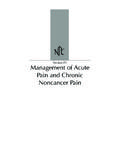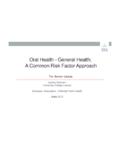Transcription of I *tr 0 t Integrative Pain Medicine: A Holistic Model of Care
1 - VOL XXI NO 1 JUNE 2013 Editorial BoardEditor-in-ChiefJane C. Ballantyne, MD, FRCAA nesthesiology, pain MedicineUSAA dvisory BoardMichael J. Cousins, MD, DSCPain medicine , Palliative MedicineAustraliaPsychosocial Aspects of Chronic Pelvic PainVol. XXI, Issue 1 June 2013 Pai n is unwante d, is unfortun ately common, and remains ess enti al for survival ( , evading dang er) and facilitating me dical d ia gnoses. This comple x amalgamation of sens ati on, em oti ons, and thoughts ma nifests it sel f as p ai n b ehavior.
2 P ai n is a moti-vati ng fact or for physician consultation s1 and for emergency d epartment v isit s and is pain : CLINICAL UPDATES MAY 20141 VOL XXII NO 2 MAY 2014 Integrative pain medicine : A Holistic Model of CareHeather Tick, MDGunn-Loke Endowed Professor for Integrative pain MedicineUniversity of WashingtonSeattle, Wash., USAE mail: field of Integrative pain medicine spans a vast number of approaches and disciplines. This issue of pain : Clinical Updates focuses on three areas of biological research of particular interest to Integrative pain medicine : nutrition and the microbi-ome, neuroplasticity, and myofascial research.
3 An exhaustive discussion of the field would require several volumes of text. As the scientific basis for these therapies expands, the overlap with conventional care is growing. Evaluating Alternative and Integrative medicine Allopathic medicine refers to conventional medicine as taught in medical schools. The allopathic system generally engages the pa-tient around a problem or a disease and spends more effort on disease management than on health pro-motion. Complementary and alternative medicine (CAM) refers to every-thing outside of the conventional teachings.
4 It includes chiropractic, massage, yoga, midwifery, natu-ropathy, and other health-care disciplines and practices. Integrative medicine (IM) is the integration of all available and appropriate health-care strategies and disciplines for the patient s benefit. A 2009 report from the Institute of medicine (IOM) Summit on Integrative medicine and the Health of the Public echoed the earlier position of the World Health Organization (WHO): Health is more than the absence of disease. The IOM report outlined key features of In-tegrative medicine : integration across the lifespan to include personal, predic-tive, preventive, and participatory care.
5 Other key components include person-centered care; integration of teams from all disciplines, including CAM; a focus on prevention and disease mini-mization; and seamless engagement of the full range of established health factors physical, psychological, social, preventive, and therapeutic. 1 The ideal practice would involve multiple disciplines and professions coordinated to work with mutual cooperation to achieve the best the United States, the National Health Interview Surveys have dem-onstrated increased use of CAM, with out-of-pocket expenditures by patients estimated at $ billion in 2007.
6 More than 38% of American adults and almost 12% of children had used some form of CAM within the previous 12 months, with pain being the most common reason for consulting CAM The WHO estimates that 80% of people in the Southern Hemisphere use traditional (that is, non-allopathic) medicine as part of their primary care. In the Northern Hemisphere, the frequency of alternative medicine use is increasing and already exceeds 75% in some first-world Yet in the United States and Canada, con-ventional medicine generally receives the highest level of reimbursement from public and private insurers alike.
7 Therefore, patients who seek treat-ment in CAM and IM settings usually are willing to pay for it. In accordance with this increasing demand for IM services, the National Institutes of Health (NIH) have established the National Center for Complementary and Alternative medicine to expand research and knowledge in this area. Numerous publications have explored why people are turning to IM despite the cost. Among the cited reasons is the fundamental differ-ence between IM and conventional care: IM has health as its main focus rather than disease. There is a bal-ance between the specifics of a given diagnosis, such as a degenerative L4 5 disk, and the whole patient body, mind, and spirit.
8 Therefore, IM pays more attention to factors such as obesity, nutritional status, unmanaged stress, social supports, coping skills, ergonomics, and exercise. Recogni-tion of the innate capacity of people to heal through self-care strategies is a pain : CLINICAL UPDATES MAY 20142cornerstone of IM, and this approach empowers patients to assume control over their health. The practitioner is present as a guide to partner with the patient in a healing journey. The exist-ing time-based fee-for-service Model , the overreliance on technology, and the inability of the establishment med-ical system to treat chronic disease adequately are also reasons patients turn to CAM and IM Integrative pain medicine and Mitigation of Risk Perhaps the most compelling reason to embrace Integrative pain strategies is to mitigate the risk to patients.
9 Awareness is growing of serious adverse effects of medications, including the escalating rates of inadvertent overdoses from prescription opioids and the develop-ment of opioid tolerance and opioid-induced The statistics on nonsteroidal anti-inflammatory drugs (NSAIDs) show that deaths in the United States from these drugs now exceed deaths from The tallies of medical mistakes from the 1999 IOM report, To Err is Human,7 to a paper by B. Starfield8 in 2000, to a report by James in 20139 highlight the heavy toll wrought by health care provided in hospitals, which now ranks as the third-leading cause of death in the United pain -management practices, which include liberal use of surgery, interventions, and drugs, are not adequately addressing the grow-ing cohort of chronic pain patients.
10 The reports on pain prepared by the IOM10 and the Army Surgeon General s pain Management Task Force both concluded that tinkering with the prevailing system of care will not address the problem. These reports speak of the culture change needed to address an inadequate system. Military medicine has been very specific in its prescriptive recom-mendations: Flip the therapeutic order, and rather than beginning with drugs or costly and risky interventions and surgeries, begin with yoga, massage, chiropractic care, or and the MicrobiomeIntegrative pain medicine begins with an assessment of nutritional status because you change your body chem-istry every time you eat.









